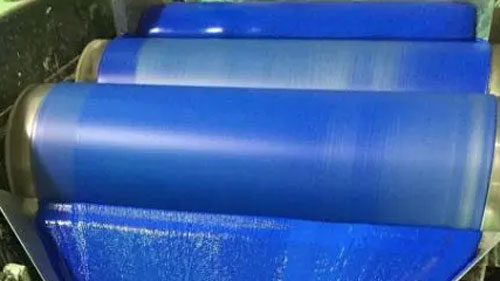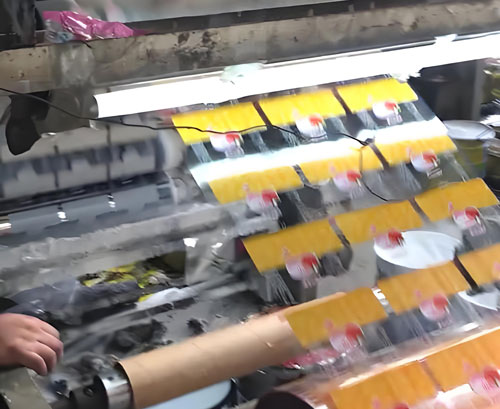Comment choisir les matières premières pour l'encre pour film plastique à base d'eau
La nature de l'encre dépend principalement de la résine.
Les résines à base d'eau peuvent décider de la viscosité, de l'adhérence, de la brillance, du séchage et de l'adaptabilité des encres à base d'eau. La résine copolymère acrylique à base d'eau peut être traitée comme liant d'encre. Puisqu'il offre des avantages significatifs en termes de brillance, il résiste également aux intempéries, à la chaleur, à l'eau, aux produits chimiques et aux taches, de sorte que l'endroit où il est directement dispersé n'a pas d'importance.
La dispersibilité et la mouillabilité des pigments sont les deux indicateurs de performance les plus importants de la résine d'encre à base d'eau. Sélectionnez un polymère soluble dans les alcalis avec des groupes fonctionnels hydrophiles dans la résine. Les amines sont utilisées pour neutraliser les groupes carboxyle sur les chaînes latérales afin de former des sels pour assurer la solubilité dans l'eau. La quantité et le type d'amine ont une grande influence sur l'hydratation du polymère et les performances du revêtement hydraté. Plus le degré de neutralisation est élevé, plus la viscosité de l’encre sera élevée. Généralement, il est préférable de contrôler la valeur H entre 7,5 et 8,5.

1. Le choix de la résine acrylique en émulsion
Le canal de résine liante des encres à base d'eau comprend souvent les composants ci-dessous.
1-1. Une résine hydrosoluble hautement hydrophile utilisée pour disperser les pigments.
1-2. Émulsion hydrophobe utilisée pour ajuster la rhéologie, ajuster les propriétés de séchage, la résistance du film et les propriétés non filmogènes.
1-3. La résine en émulsion est la principale résine filmogène et elle n’a aucune stabilité au cisaillement et au gel-dégel. Il existe peu de groupes fonctionnels hydrophiles et le film d'impression a une bonne résistance. Cependant, le film a une mauvaise résolution et il est facile de bloquer la plaque pendant l'impression.
Les types et dosages des trois résines doivent être examinés au moyen de tests comparatifs.

2. Sélection de pigments à base d'eau
Les encres à base d'eau sont colorées avec des pigments, qui nécessitent une bonne dispersibilité des pigments et une bonne résistance aux alcalis. Même si certains d’entre eux peuvent être utilisés, la saturation des couleurs est souvent insuffisante. Le plus approprié est d’utiliser un gâteau pigmentaire à haute teneur en solides. Ce type de pigment à haute teneur en solides peut augmenter le pouvoir colorant de 5 à 15 % et présente une couleur vive, une faible viscosité et un système stable. Les utilisateurs n'ont besoin que de disperser à grande vitesse, ce qui simplifie le processus de fabrication de l'encre.
Afin de réduire les coûts, vous pouvez choisir des pigments organiques de couleurs vives. Par exemple, le rouge lithol (pigment rouge), le rouge doré (pigment rouge), le bleu de phtalocyanine (pigment bleu), le vert de phtalocyanine (pigment vert), le jaune benzidine (pigment jaune), le jaune permanent (pigment jaune), etc. Le dioxyde de titane est utilisé pour le blanc et le noir de carbone hautement pigmenté pour le noir. L'ajout de tensioactifs permet de disperser et de stabiliser les particules de pigment.

3. Sélection d'additifs
Le rôle des additifs dans les encres à base d’eau est plus important que celui des encres à base de solvants. Les additifs peuvent améliorer et renforcer les défauts et la stabilité des encres à base d'eau. D'une manière générale, ces additifs chimiques comprennent agent mouillant, agent dispersant, agent d'égalisation, agent antimousse, agent anti-usure, agent glissant et agent réticulant, etc.
Nous rencontrons souvent des clients dont les échantillons ne réussissent pas le test. Après des discussions entre les ingénieurs de l'autre partie et nos ingénieurs, nous avons constaté que le problème général se produit principalement dans le rapport de formule. Lors de la conception d’une formulation, les fabricants doivent prendre en compte les propriétés physiques et chimiques de l’encre. En outre, ils doivent également procéder à des ajustements en fonction de la manière dont l’encre est utilisée sur la presse à imprimer et de la qualité du produit imprimé. En cas de circonstances particulières, iSuoChem enverra également nos ingénieurs techniques pour fournir des conseils sur site aux clients.